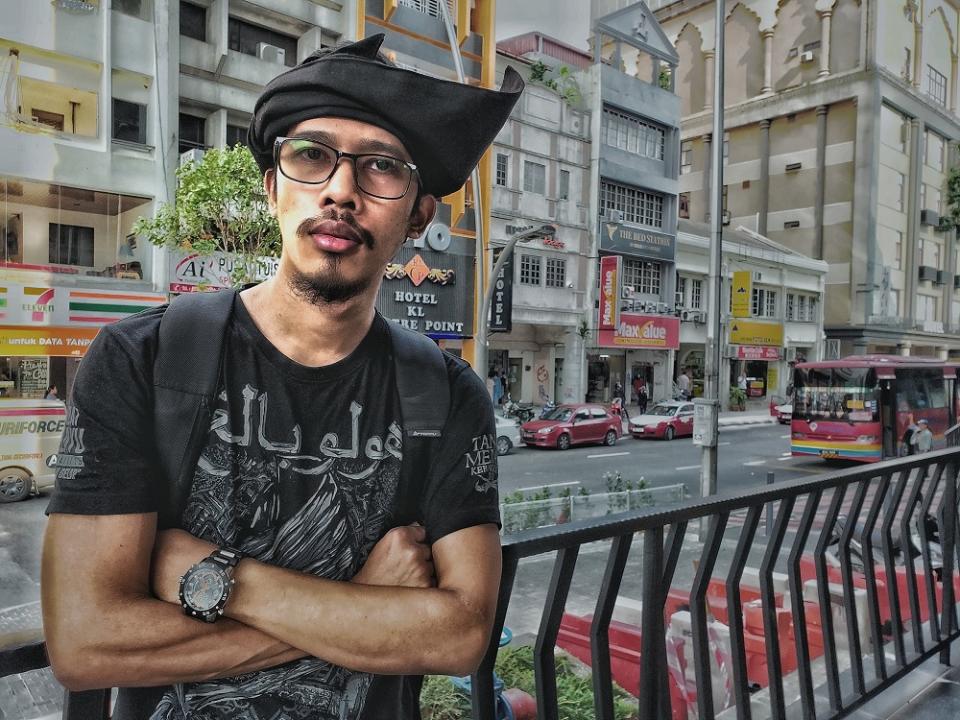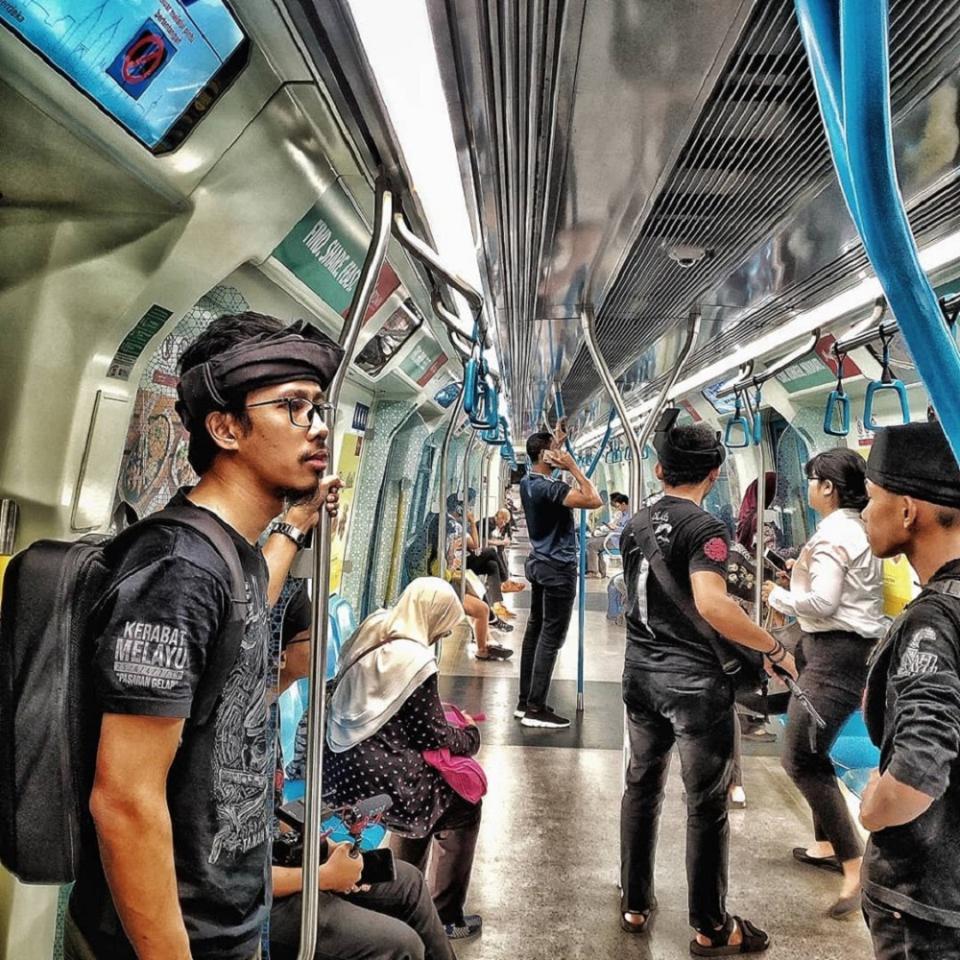This man wants Malays to don the 'tanjak' on Sept 16, but why? (VIDEO)

KUALA LUMPUR, Aug 23 — Seated before a rolling web camera, Nur Ahmad Faiz Mohd, 28, dons a black “tanjak” on his head.
He wears a black tee with two keris printed on top of a caption: “Tanah Melayu. Kebangkitan” (Malay Soil. Uprising), the clarion call of a nascent movement aimed at “rebranding the Malays” with an ideal of moral, intellectual, and spiritual enlightenment.
Addressing his followers through a live feed aired on Facebook, Nur Ahmad insisted he initiated the campaign — which simply urges his fellow Malay men to wear the traditional headgear on September 16 — is not meant to instil a sense of ethnic supremacy over others.
Instead, he stressed this repeatedly — “Tanah Melayu Kembali Bertanjak” is a call for self-reflection; a journey inward, of self-criticism.
“All this while we focus on the wrong things... we focus so much on the external that we forget to scrutinise ourselves and thus lead us astray to do the wrong things,
“Therefore I want the Malays to start focusing on themselves,” Nur Ahmad said in a recent interview with Malay Mail.

The campaign, which started just two weeks ago but has since drawn nearly 100,000 followers on Facebook, appears simple on the surface.
All Nur Ahmad appealed for is for Malay men to don the tanjak come Malaysia Day, when Malaya together with North Borneo (now Sabah), Sarawak, and Singapore on September 16, 1963, to form the country we know today.
But the act of wearing the tanjak, a traditional Malay headgear seen as emblematic of the Malay identity, and to a large extent of Malay political power, carries a much deeper significance.
Nur Ahmad said the tanjak, or sometimes known as the tengkolok or destar, serves as a symbolic reminder of the olden ways of a community known for its politeness, bravery, humility, and wisdom, most of all.
“A person with jati diri is one who knows himself,” the 28 year-old, who works in the creative industry, explained using the Malay term that roughly describes “a strong sense of identity”.
“What I meant to say [with my campaign] is [a Malay] with jati diri is someone who knows right from wrong, who can foster peace regardless of how complicated the situation is.
“And this jati diri was the hallmark of olden Malays, whose morality was of the highest standard.”
Nur Ahmad said he kickstarted the tanjak-wearing drive without any real ambition to make it big.

On August 13, Nur Ahmad and two of his friends toured the capital city donning the self-made headgear and clad in black tees printed with messages of the campaign. Photos of their activity were then uploaded on social media.
Nur Ahmad said that the act of simply walking around with a tanjak crowned on his head was to display a sense of pride about being Malay.
Just two weeks later, the campaign’s Facebook page drew thousands of supporters who started to post their own photos in the tanjak. Many pledged to join Nur Ahmad to wear them openly this September 16.
“I didn’t expect it to grow big. From just 100 [people who wanted to join], it grew to 30,000.”
And the rapid pace of support the movement received have made many uneasy. The campaign’s choice of symbolism like the keris and the content of discussions on its Facebook page have raised questions about its real intention, or if the campaign is a subtle form of Malay supremacism.
For one, Nur Ahmad’s videos spoke repeatedly about the internal and external “invasion” and “manipulation” of the Malay race, language that closely mimics the tribal rhetoric often used by ultra-Malay groups.
In a video titled “Invited 100, but 3,000 vowed to join” that has been viewed over 17,000 times, he presented a critical analysis that appeared sympathetic of past pro-Malay movements, thoroughly combing through and dissecting its mistakes followed by inputs on ways to make its messaging more palatable to the mass.
“The problem with other groups is we who join are passionate, but only we can see that while people who are watching are laughing,” he said in the video.
“What we don’t realise is we do things the way we did because they have manipulated us and found ways to solicit the kind of reaction expected of us.”
There is also the fact that the movement chose the date of an annual celebration often marked with reminders about the rich diversity of its multi-ethnic population, to commemorate what is arguably an exclusive culture.
Furthermore, the brand of “Tanah Melayu” used by the movement, a reference to the old name of the Malay lands prior to the formation of Malaya, seems to exclude Sabah and Sarawak.
The group has also featured photo of itself participating in the rally protesting the International Convention on the Elimination of All Forms of Racial Discrimination (Icerd) last year, organised by Umno and PAS, which focused on themes including Malay supremacy.

There is also a question of commercialism. Nur Ahmad’s brand has been selling pro-Malay merchandise since 2018, including t-shirts bearing iconography such as the Malay pendekar or warrior and slogans such as “Kepimpinan Melayu” (Malay leadership).
Numerology such as “313” also makes an appearance — which some Malay-Muslim movements use to signify among others the alleged number of Muslim army during the historic Battle of Badr, and verse 3:13 of Quran that mentions the army of those “fighting in the cause of Allah” against disbelievers.
Its t-shirts sell between RM34 to RM55, while the tanjak are sold for RM55 each.
But Nur Ahmad insists such claims of racism toward his campaign is misguided and is likely rooted in racial prejudice itself. To prove his sincerity, he claimed to have never intended for the tanjak campaign to be politicised or grow into a full-fledged political movement.
“I can just quit all this but it’s too late as it’s grown too big,” he said.
“If this campaign falls into the wrong hands it has the potential to wreak havoc.
“Hence whether or not I want to I must stay and continue to make sure it stays the right course.”
Related Articles Comedian Nabil Ahmad apologises after ‘disrespectfully’ chucking traditional headgear on floor during ‘live’ show (VIDEO) Dr M: Invitation to unite Malays under PPBM meant for ‘members’ of other parties, not entity itself PAS leader urges Dr M to join PAS-Umno in saving Malays’ future


